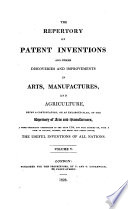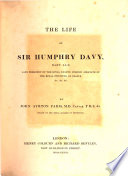 | 1828 - 410 pages
...repulsions, and advanced the hypothesis, " that chemical and electrical attraction -were produced by the same cause, acting in one case on particles, in the other on masses; " and that the same properly, under different modifications, was the cause of all the phenomena exhibited... | |
 | 1828 - 942 pages
...repulsions, and advanced the hypothesis, " that chemical and electrical attraction were produced by the same cause, acting •in one case on particles, in the other on masses; " and that the same property, under different modifications, wan the cause of all the phenomena exhibited... | |
 | John Ayrton Paris - 1831 - 582 pages
...advanced to the still more important step — " that chemical and electrical attractions were produced by the same cause, acting in one case on particles, in the other on masses.'' From these views he is led to propose the electrical powers, or the forces required to disunite the... | |
 | John Ayrton Paris - 1831 - 598 pages
...advanced to the still more important step — " that chemical and electrical attractions were produced by the same cause, acting in one case on particles, in the other on masses.'' From these views he is led to propose the electrical powers, or the forces required to disunite the... | |
 | 1836 - 604 pages
...repulsions ; and he advanced the hypothesis that chemical and electrical attraction were produced ly the same cause, acting in one case on particles, in the other on masses ; and that the same property under different circumstances, was the cause of all the phenomena exhibited... | |
 | 1836 - 472 pages
...say?, " Sir Humphry Davy's theory assumes that ' chemical and electric attractions are produced by the same cause; acting in one case on particles, in the other on masses : and the same property, under different modifications, is the cause of all the phenomena exhibited... | |
 | 1836 - 674 pages
...say*, " Sir Humphry Davy's theory assumes that ' chemical and electric attractions are produced by the same cause; acting in one case on particles, in the other on masses : and the same property, under different modifications, is the cause of all the phenomena exhibited... | |
 | Michael Faraday - 1839 - 614 pages
...the year 1826f. His general statement is, that " chemical and electrical attractions were produced by the same cause, acting in one case on particles, in the other on masses, of matter ; and that the same property, under different modifications, was the cause of all the phenomena exhibited... | |
 | 1841 - 542 pages
...repulsions, and advanced the hypothesis, " that chemical and electrical attraction were produced by the same cause, acting in one case on particles, in the other on masses;" and that the same property , under different modifications, was the cause of all the pluenomena exhibited... | |
 | Michael Faraday - 1844 - 330 pages
...says, " Sir Humphry Davy's theory assumes that 'chemical and electrical attractions are produced by the same cause; acting in one case on particles, in the other on masses : and the same property, nnder different modifications, is the cause of all the phenomena exhibited... | |
| |